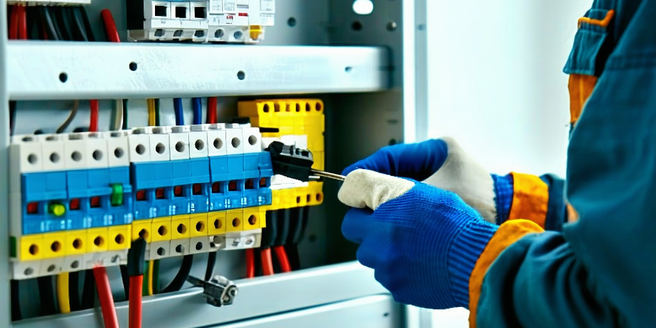Accessing Free Home Safety Tips

Understanding the Importance of Home Safety
Home safety is a fundamental aspect of protecting your loved ones and securing your property. Comprehending its significance is the first step towards creating a safer living environment. Awareness about potential risks, such as electrical faults, fire hazards, and slips and falls, can prevent accidents and injuries. Implementing preventive measures, like installing smoke detectors and securing loose rugs, can mitigate these risks. Furthermore, educating family members about emergency protocols, such as exit routes during a fire and accessing emergency contacts, enhances preparedness. Home safety involves proactive vigilance and a commitment to fostering a secure haven for all inhabitants. It’s crucial to regularly assess and update safety measures to adapt to changing circumstances, ensuring the well-being of everyone who calls your house a home. Knowledge is the first line of defense in protecting your home.
Identifying Common Household Hazards
Being aware of common household hazards can significantly reduce the risk of accidents within the home. Everyday items and conditions can turn dangerous without proper attention and maintenance. Begin with assessing areas like the kitchen, where sharp objects, hot surfaces, and slippery floors pose significant risks. In bathrooms, ensure electrical appliances are away from water sources to prevent electric shocks. Living rooms often have cords that can trip or present choking hazards. It’s essential to use childproof locks on cupboards to keep young children safe. Also, regularly inspect your home for potential threats like mold, which can lead to respiratory issues, or overloaded electrical sockets, which could cause fires. Taking time to identify and address these hazards can create a safe, stress-free environment for you and your family, minimizing the risks of common home accidents.
Emergency Preparedness: What You Need to Know
Being prepared for emergencies is crucial to ensuring the safety and security of your household. Begin by educating every family member on emergency protocols and discussing potential scenarios such as fires, natural disasters, or medical emergencies. Develop an emergency plan that includes evacuation routes and safe meeting points outside the home. Keeping essential supplies on hand, such as flashlights, batteries, first-aid kits, and non-perishable food, is vital. Have copies of important documents readily accessible and consider storing them digitally for extra security. Regularly practice emergency drills to ensure quick and efficient response during actual emergencies. Ensure all family members know how to operate safety equipment, such as fire extinguishers and emergency shut-off valves for utilities. By taking these proactive measures, you enhance your household’s resilience and readiness to face unforeseen emergencies with confidence and composure.
Childproofing Your Home: Essential Tips
Creating a safe environment for children involves thorough planning and proactive measures to prevent accidents. Begin by assessing your home from a child’s perspective to identify potential hazards, such as sharp edges, uncovered electrical outlets, and accessible cleaning chemicals. Use safety gates to restrict access to staircases and dangerous rooms like kitchens or bathrooms. Secure heavy furniture and appliances to walls to prevent tipping, and install window guards to prevent falls. Regularly inspect toys for small parts that could present choking hazards and keep small, sharp, or hot items out of reach. Additionally, educate older children about safety rules and encourage them to ask for help when needed. Remember, childproofing is an ongoing process and should evolve as your child grows and develops new skills, ensuring their safety and your peace of mind.
Fire Safety Measures Every Home Should Have
Implementing fire safety measures is crucial in protecting your home and loved ones. Start with installing smoke detectors in key areas, such as the kitchen, bedrooms, and hallways, and test them monthly to ensure they function correctly. Implement a fire escape plan, highlighting primary exit routes and designating a safe meeting point outside. Equip your home with fire extinguishers and ensure all family members know how to use them. Keep flammable materials like matches and lighters away from children and store them in secure places. Regularly check electrical systems for faulty wiring, and avoid overloading circuits to prevent electrical fires. Maintain your home’s heating systems by scheduling regular inspections. Educate your household on fire prevention techniques and the importance of never leaving cooking or candles unattended. Consistently updating and practicing fire safety measures ensures a rapid and effective response if a fire does occur.
Online Resources for Free Home Safety Advice
The internet offers a wealth of resources to help enhance your home’s safety without breaking the bank. Numerous organizations and websites provide comprehensive guides, tips, and checklists for free. For instance, the National Fire Protection Association (NFPA) offers valuable insights on fire safety, while the U.S. Consumer Product Safety Commission (CPSC) provides updates on product recalls and safety tips. Additionally, websites like Safe Kids Worldwide focus on child safety, offering practical advice to prevent accidents. Many local fire departments and community organizations also share free resources on emergency preparedness and home safety assessments. Engaging with online forums and communities dedicated to home safety can connect you with like-minded individuals and experts willing to share their knowledge and experiences. By leveraging these free online resources, you can stay informed and take proactive steps to keep your home and family safe.